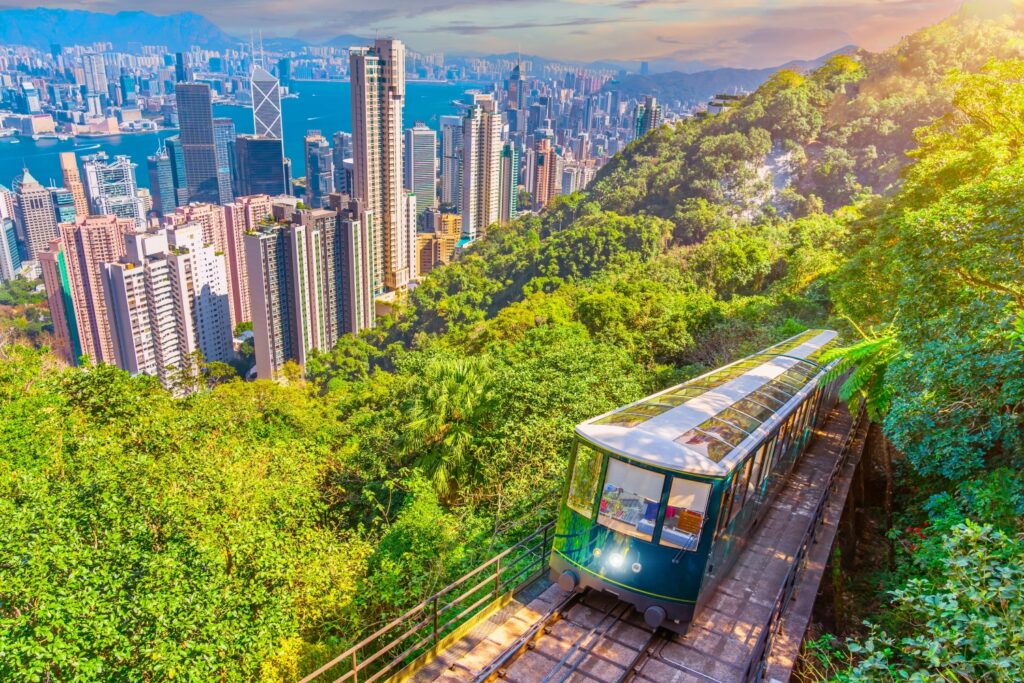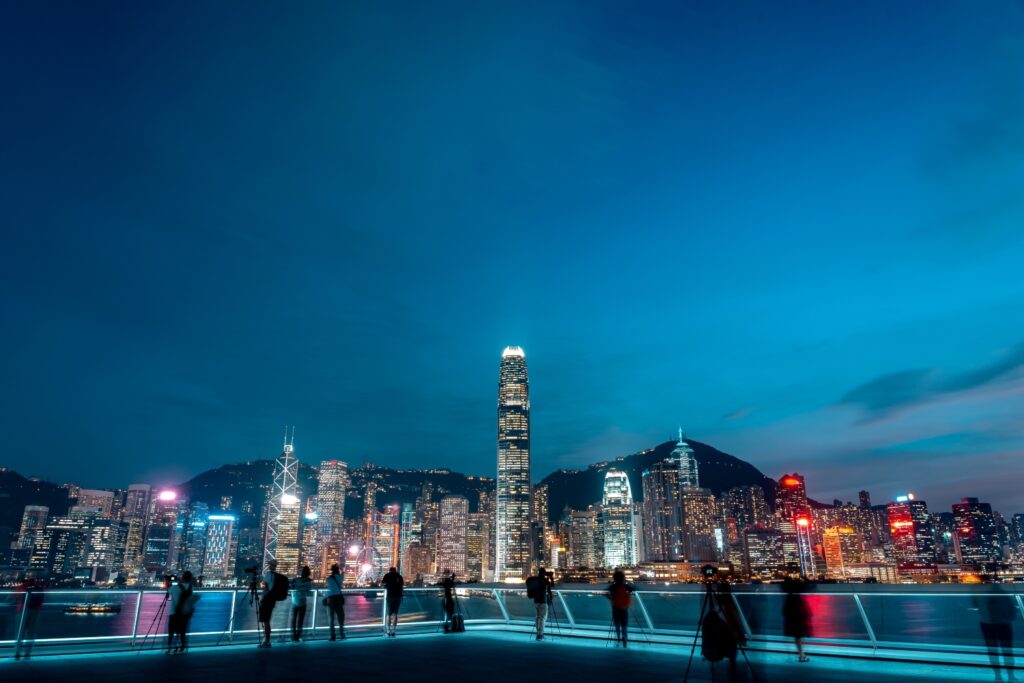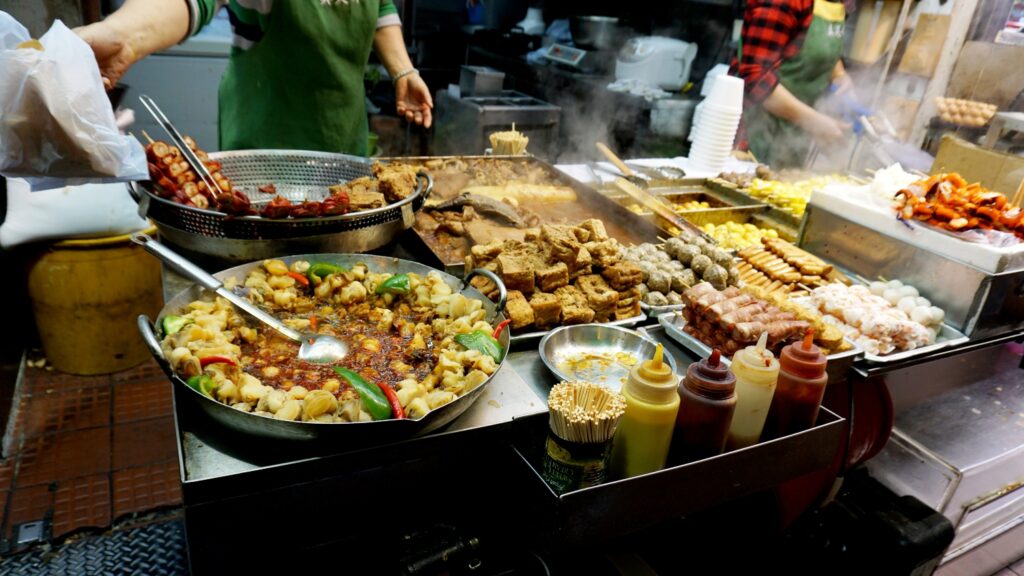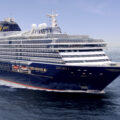Perched at the edge of the South China Sea, where centuries-old junk boats drift beneath glass towers, Hong Kong is a cruise destination that pulsates with possibility. With a name meaning ‘fragrant harbour’, you are guaranteed an odyssey for all the senses. On a Hong Kong cruise you can experience the sights, the sounds, and the scents that are all distinctly Hong Kong, brought together in a dichotomy of East meets West that probably shouldn’t work – but does.
This corner of Southeast Asia is where tradition hums beneath the high-rises, and where 36 hours will pass in a heartbeat, yet somehow leave you feeling like one of the locals. Join us as we uncover what to do in Hong Kong.

What to Do in Hong Kong by Day
Let us first establish our bearings. In the crudest sense, Hong Kong is split into two distinct areas: Kowloon and Hong Kong Island. Yes, there are countless suburbs and outlying islands, but realistically, this is where you’re going to spend your 36 hours. Separating the two is Victoria Harbour, which you might not know by name, but it’ll certainly seem familiar once you’ve laid eyes on it.
And it’s as good a place as any to begin understanding what to do in Hong Kong for a day. We probably don’t need to tell you that Hong Kong boasts one of the most recognisable skylines in the world, and we’re willing to bet your bottom HK dollar that you’ll return home with a camera roll full of it. Daytime, nighttime, sunrise, sunset – it’s one of those frustratingly beautiful vistas you will never tire of.
And this is why Victoria Harbour is the perfect place to kick-start your album… or the Star Ferry, to be precise. These humble boats have been chugging back and forth for over a century, and for just a few dollars, it’s easy to see why they have managed to stand the test of time. Don’t expect the bells and whistles found with your cruise line – these are functional ferries that delight commuters as much as they do day-trippers, but with views like these, all will soon be forgiven.
One quintessential Hong Kong experience ticked off your list, it’s time for another – scaling Victoria Peak. Before you recoil at the thought of donning your hiking boots in the Hong Kong humidity, fear not, as there’s yet another public transport icon waiting to do the job for you. Since 1888, the Peak Tram has been trundling up and down its slopes, taking a mere 10 minutes from top to bottom. The funicular railway – one of the world’s oldest, no less – trundles between lush vegetation and glimpses of the cinematic views that await you at the top. But it’s only once you reach the summit that the sheer scale and magnificence of Hong Kong unfurl before your very eyes. Prepare for wow moments aplenty, especially if you have made your ascent on a clear day. How’s that camera storage faring?
For those who seek out quieter corners amid Hong Kong’s relentless energy, few places offer greater contrast than Kowloon Walled City Park. Once the site of a chaotic, densely packed maze of over 300 interconnected high-rises – home to more than 30,000 residents within just 2.6 hectares – this infamous enclave of lawlessness was demolished in 1994. In its place now lies a serene, beautifully landscaped garden. While subtle traces of its turbulent past remain, today the park is a haven of peace, where lotus ponds shimmer, bamboo sways gently in the breeze, and traditional Chinese pavilions nestle among meticulously tended greenery, in what is a true moment of calm in the heart of the city.
Nobody could blame you if, in this city built on water, you can’t help but be beckoned by Hong Kong’s beaches. Yes, Hong Kong has coastal sanctuaries as fully-fledged as anywhere else in Southeast Asia; from the bohemian Shek O to the powdery sands and turquoise waters of Sai Kung, prepare for your preconceptions to be challenged in the best possible way.

What to Do in Hong Kong by Night
Hong Kong comes alive long after the sun has melted behind the skyscrapers. Neon lights blaze as lanterns bob in the breeze – there’s a very different vibe after nightfall, and the city demands your presence. You’ll be only too happy to oblige.
It’s easy to meander around Hong Kong without keeping to anyone’s schedule but your own, but there is one nightly event you might just want to set your watch by. A Symphony of Lights sees Victoria Harbour burst into pools of colour, carefully choreographed to accompanying music in a free spectacle that draws the crowds night in, night out. Head down to Tsim Sha Tsui waterfront a few minutes ahead of the 8pm start time, and you won’t need to elbow anyone out of the way for a stellar view.
As the glitzy shopping malls pull down their shutters for the day, Hong Kong’s night markets come into their own. Whether you’re an active shopper or a passer-by, you can’t help but be impressed by the sheer magnitude of what’s on offer. Kowloon’s Temple Street Night Market is something of a local institution; expect a chorus of stallholders tempting you with their wares, which include everything from tourist treasures to jade trinkets. Prepare to leave your personal space and resolve not to purchase anything at the entrance to this open-air market (the ornate Temple Street Archway) and prepare to part with a few dollars.
Alternatively, head to the Ladies’ Market, which, despite the name, is very much open to everyone. It’s Hong Kong’s hotbed for haggling, and could well put your luggage allowance to the test. This is street-level charm played out in true Hong Kong style.

Best Spots to Eat and Drink in Hong Kong
Knowing where to eat in Hong Kong will underpin your entire 36 hours in the city. Your go-to order from your local Chinese takeaway will soon become a distant memory as you gorge your way through the city’s culinary repertoire. Hong Kong is very much an open kitchen; sure, you can part with more than a fistful of dollars and dine with the finest, but trust us, many of the more rewarding experiences lie elsewhere.
A weakening thread in Hong Kong’s culinary fabric these days, the dai pai dong is a must-try. Only around 20 remain, so searching for the elusive green-painted steel exteriors will be something of a gastronomic treasure hunt. Your reward will be eating at one of the last bastions of cheap, authentic Cantonese cuisine; each of these unassuming eateries has been passed down through the generations, fine-tuning its specialities in the process. Expect each dish to be served with lashings of authenticity and family pride. Pull up a plastic stool for claypot rice or freshly grilled squid, and watch the theatre of Hong Kong unfold.
For a more leisurely meal, dim sum is the answer – but only if it’s served in the old-school way. Dim sum trolleys are the invention that ensures food envy is the thing of the past; steaming baskets are paraded around the restaurant for all to see, with a simple waggle of the finger all that’s needed to place your order. Our top recommendation? Char siu bao, pillowy buns packed rich with sweet, sticky barbecue pork. No chopsticks required.
The need for snacks in Hong Kong is probably going to be minimal – but the want? Well, that’s a different matter. We’ll point you in the direction of the pineapple bun, a local delicacy that wouldn’t fare well under the Trade Descriptions Act. There is, in fact, no pineapple in it – the name is instead derived from the crackled sugary exterior. This local delicacy achieves a harmonious balance of texture and taste – it’s often enjoyed warm and sometimes served with a thick slab of cold butter in the middle.
All that eating is going to work up quite a thirst, and with more than 150 years of British colonialism under Hong Kong’s belt, it probably won’t come as a surprise to learn that milk tea is on the menu. Brewed under less-than-conventional circumstances, silk-stocking milk tea (to give it its full name), involves filtering strong, black tea through a sackcloth that could easily be mistaken for a pantyhose. This process is often carried out several times to ensure optimum smoothness, before adding evaporated milk and as much sugar as you can stomach. What you’re left with is a sweet, sumptuous concoction that ever-so-slightly resembles what you’re used to back home.

Book a Hong-Kong Cruise at Bolsover Cruise Club
If you’re looking to experience all that Hong Kong has to offer, then a cruise to the Far East opens up a world of possibilities. Explore Hong Kong to its full potential by taking advantage of our cruise deals and Asia cruise and stay holidays in this breathtaking city.
If you have any questions about booking a Hong Kong cruise, be sure to contact us or if you want to learn more about what other cities around the world have on offer, you can explore our cruise guides for all you need to know.
If you’re arriving at Kai Tak Cruise Terminal, the easiest ways to reach the city centre are:
Taxi: Around 15–20 minutes to Tsim Sha Tsui or Central.
Shuttle Bus: Some cruise lines offer complimentary shuttles to central points like Kowloon Station.
MTR (Subway): A short taxi or shuttle ride to Kowloon Bay or Ngau Tau Kok MTR stations, from where you can take the MTR to key districts like Central, Mong Kok, or Tsim Sha Tsui.
If you’re docking at Ocean Terminal (Harbour City, Tsim Sha Tsui), you’re already in the city centre—perfectly located for immediate access to shopping, dining, and sightseeing.
Yes. Both terminals are equipped with:
Taxi stands (readily available).
Private transfer services pre-bookable through your cruise line or online.
Public transport connections (buses, shuttles to MTR).
Hop-on hop-off tour buses, which often start routes near the terminals – ideal for day-trippers.
From Kai Tak Terminal: It’s a short drive to Kowloon’s vibrant areas like:
Chi Lin Nunnery & Nan Lian Garden
Kowloon Walled City Park
Mong Kok street markets (Ladies Market, Temple Street Night Market)
From Ocean Terminal: You’re steps from:
Victoria Harbour
Avenue of Stars
Star Ferry to Central
Harbour City Mall and dozens of museums, including the Hong Kong Museum of Art.
Yes. Both Kai Tak and Ocean Terminals offer free public Wi-Fi in most areas, although speeds may vary depending on congestion. Many cafes and lounges within or near the terminal also offer Wi-Fi.
Most cruise passengers can enter Hong Kong visa-free for short stays, depending on their nationality. However, always check with your cruise line and local immigration requirements before arrival, especially if your cruise includes stops in Mainland China or other regions.





You might also be interested in...
New Cruise Ships… Coming Soon: 2024 & Beyond
Things to do in Civitavecchia Port
Escape to Paradise: Exploring Cruise Lines’ Private Islands
Marella & TUI River Cruises Winter 2026